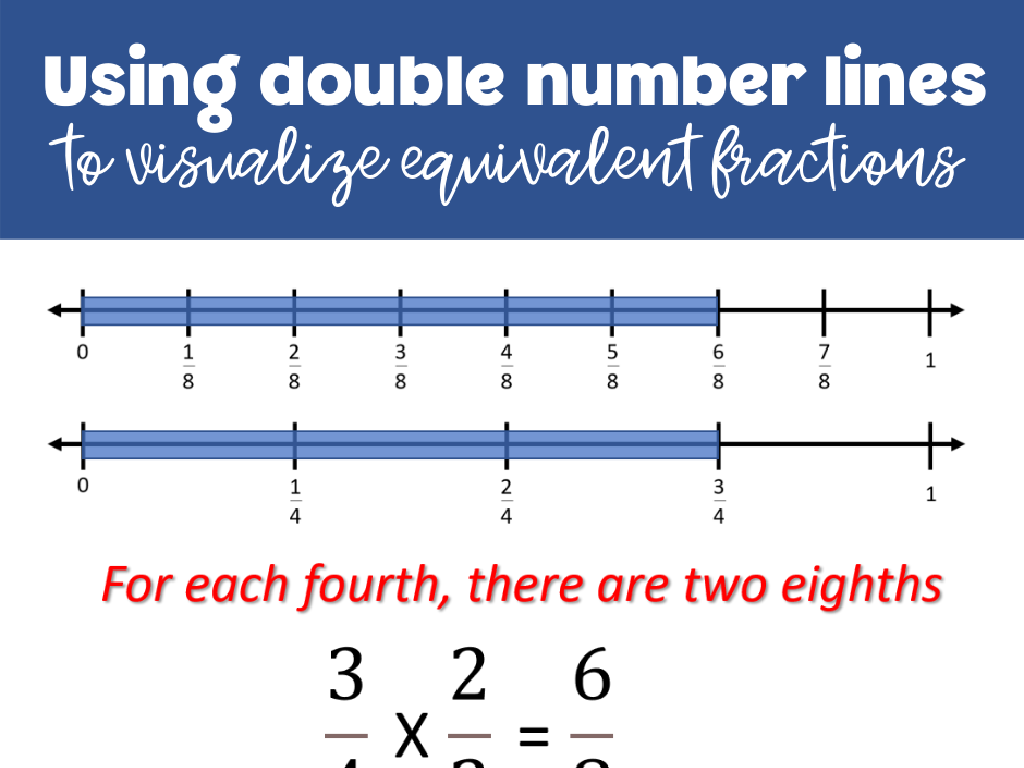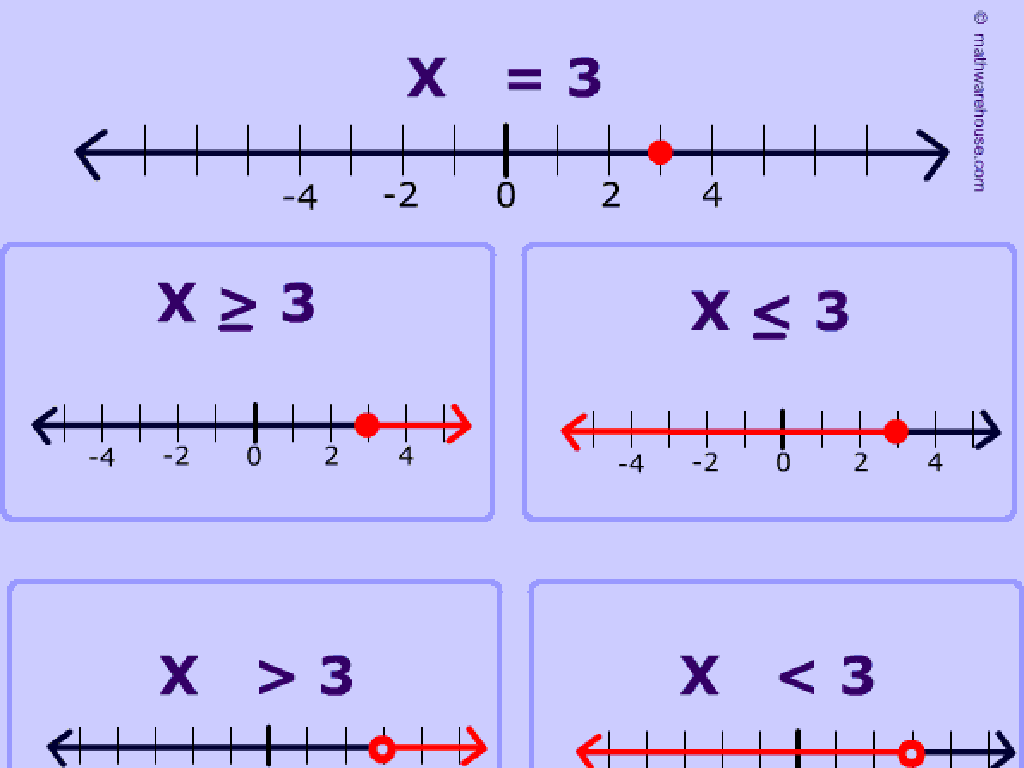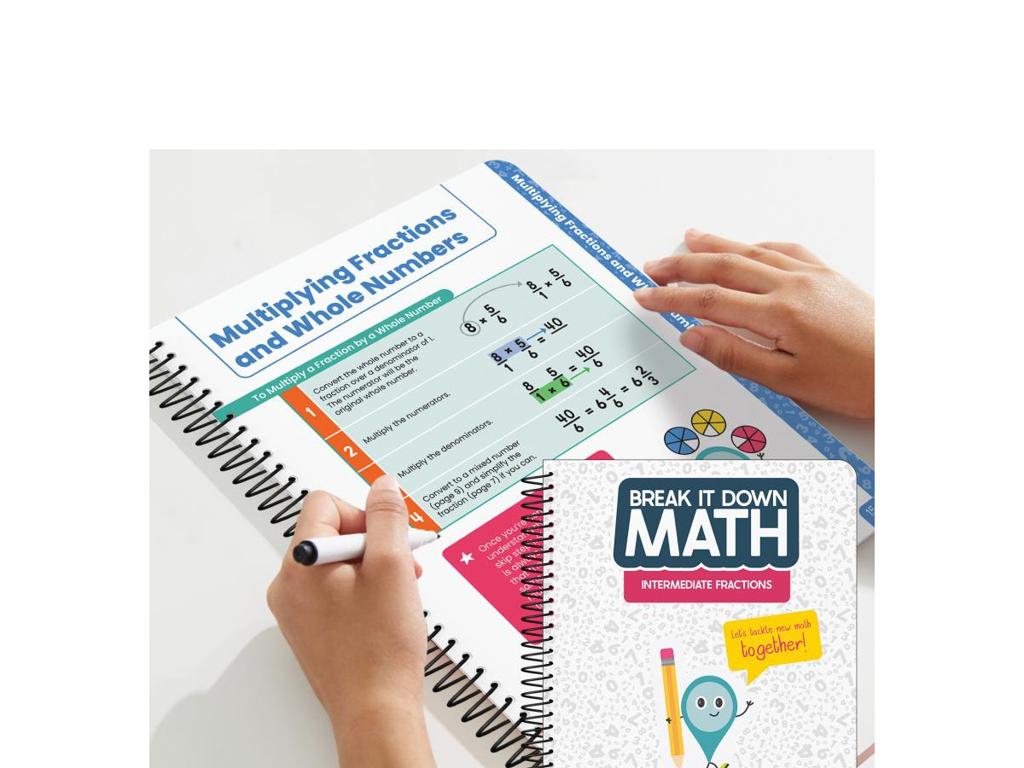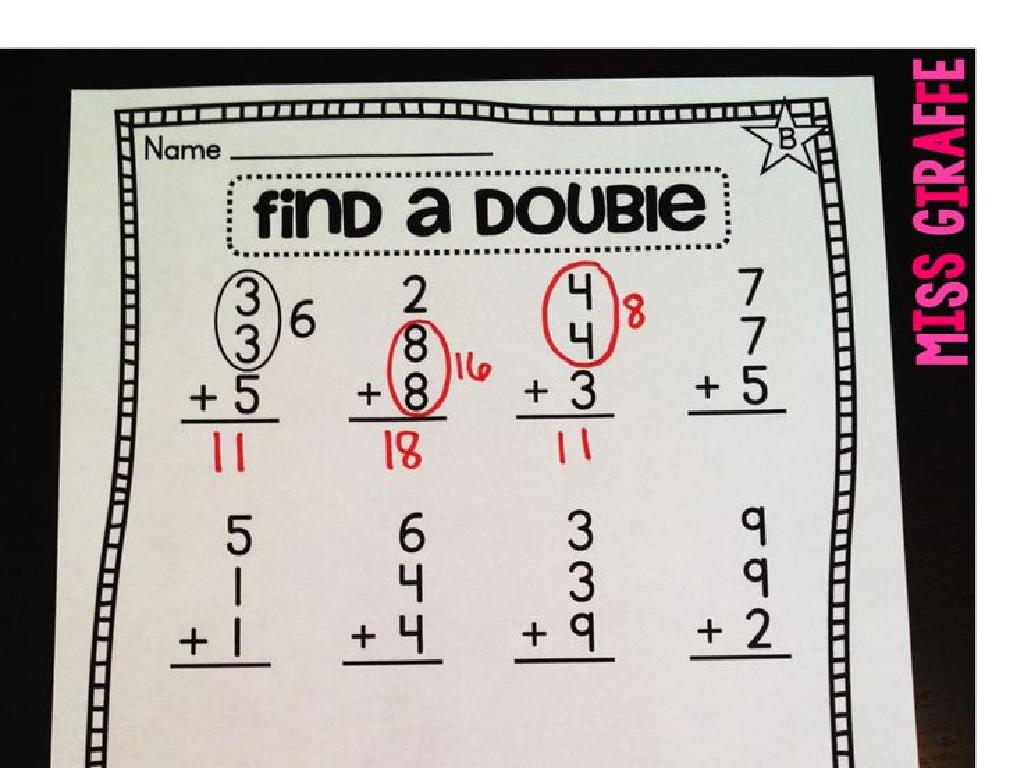Add, Subtract, Multiply, Or Divide Two Whole Numbers: Word Problems
Subject: Math
Grade: Sixth grade
Topic: Mixed Operations: Whole Numbers
Please LOG IN to download the presentation. Access is available to registered users only.
View More Content
Welcome to Mixed Operations!
– Grasp mixed operations concept
– Combining add, subtract, multiply, divide with whole numbers
– Daily life applications
– Shopping, cooking, budgeting use mixed operations
– Today’s goal: solve real-world problems
– Apply operations to tackle word problems
– Practice with examples
– Example: If you buy 3 pencils at $2 each and give the cashier $10, how much change do you get?
|
This slide introduces students to the concept of mixed operations with whole numbers, emphasizing their practicality in everyday situations such as shopping, cooking, and managing a budget. The goal for today’s lesson is to apply addition, subtraction, multiplication, and division to solve real-world problems. Encourage students to think about how these operations are used in their daily lives and to be prepared to practice with word problems. Provide examples and guide them through the process of identifying the correct operation to use in various scenarios. This will help them understand the relevance of math in practical terms and build their problem-solving skills.
Review of Operations: Mastering Mixed Problems
– Recap: 4 core math operations
– Addition, subtraction, multiplication, division are the building blocks of math.
– Whole number operation examples
– Example: 15 + 9, 23 – 8, 7 x 4, 56 ÷ 8.
– Understanding PEMDAS/BODMAS
– Parentheses/Brackets, Exponents/Orders, Multiplication/Division, Addition/Subtraction sequence.
– Solving mixed operation problems
– Apply order of operations to solve: 7 + 3 x (8 – 3).
|
Begin with a brief review of the four fundamental operations in mathematics, ensuring students recall how to perform addition, subtraction, multiplication, and division with whole numbers. Provide clear examples for each operation to reinforce understanding. Introduce the concept of the order of operations, explaining the PEMDAS/BODMAS acronym as a guide to solving equations with multiple steps. Emphasize the importance of following this order to obtain the correct answer. Conclude with an example that combines different operations, guiding students through the process of solving it step-by-step. Encourage students to practice with additional problems to solidify their grasp of mixed operations.
Understanding Word Problems: Mixed Operations
– Identify operation keywords
– Look for words like ‘sum’, ‘difference’, ‘product’, ‘total’, which indicate the required operation.
– Read the problem thoroughly
– Take your time to read every detail in the problem to avoid missing key information.
– Understand the question asked
– Make sure you know what the problem is asking. Is it asking for a total, a remaining amount, or a comparison?
– Break down into smaller parts
– Divide the problem into steps, solving one part at a time to simplify complex problems.
|
This slide aims to equip students with strategies to tackle word problems involving mixed operations. Emphasize the importance of identifying keywords that hint at the operation needed to solve the problem. Encourage careful reading to ensure all details are considered and the question is fully understood. Teach students to break down problems into smaller parts, making complex questions more manageable. Provide examples of keywords for each operation and demonstrate how to dissect a problem step by step. Practice with the class by reading problems together and discussing the clues and strategies to solve them.
Addition and Subtraction in Word Problems
– Calculate total apples
– If starting with 15 apples and buying 20 more, how many in total?
– Determine remaining candies
– If you have 40 candies and give 12 away, how many do you have left?
– Practice problem-solving
– Understand real-life application
– Use these skills to solve everyday problems involving money or sharing.
|
This slide introduces students to solving addition and subtraction word problems, a key skill in sixth-grade math. Start with the apple example to demonstrate addition in a real-world context. Then, use the candy example to show subtraction, emphasizing the importance of careful reading to identify the correct operation. Encourage students to practice with similar problems and understand how these operations are used in daily life, such as managing money or dividing items among friends. Provide additional practice problems for homework and encourage students to create their own word problems to share with the class.
Multiplication & Division in Word Problems
– Calculate total pencils in packs
– 6 packs with 10 pencils each, how many in total?
– Divide cookies into bags evenly
– 72 cookies shared into 9 bags, how many per bag?
– Practice solving real-world problems
– Understand multiplication & division
– Multiplication combines equal groups, division shares them out
|
This slide is aimed at helping students apply multiplication and division in practical scenarios. Start with the example of pencils in packs to illustrate multiplication as combining equal groups. Then, use the cookie example to show division as sharing equally. Encourage students to identify keywords that signal multiplication (e.g., ‘each’, ‘in total’) and division (e.g., ‘share’, ‘equally’). Provide additional word problems for practice and ensure students understand the underlying concepts of these operations. Discuss strategies for solving problems, such as drawing models or using repeated addition for multiplication and subtraction for division. The goal is for students to become comfortable with translating real-world situations into mathematical expressions and equations.
Combining Operations in Word Problems
– Understand multi-step problems
– Example: Sticker pack problem
– Bought 3 packs with 12 stickers each, gave away 10. Calculate total stickers left.
– Why multiple steps are needed
– Some problems require several operations to find the solution.
– Practice with varied problems
– Solve different problems to master mixed operations.
|
This slide introduces students to the concept of solving word problems that require multiple operations. Start with the sticker pack example to show how to approach a problem methodically: first multiply the number of packs by the number of stickers per pack, then subtract the stickers given away. Emphasize the importance of understanding the logical sequence of operations in a real-world context. Encourage students to identify keywords that signal which operations to use. Provide a variety of practice problems to ensure students become comfortable with combining addition, subtraction, multiplication, and division in different scenarios.
Strategies for Mixed Operation Word Problems
– Estimate to predict and check answers
– Round numbers to make a quick guess
– Visualize with pictures or diagrams
– Drawings can simplify complex problems
– Write steps to organize work
– List out calculations in order
– Practice with examples
– Try solving ‘Sarah has 3 apples, buys 5 more, then gives 2 away. How many does she have?’
|
This slide aims to equip students with strategies to tackle mixed operation word problems effectively. Estimation helps in making reasonable guesses and verifying the final answer. Visualization through pictures or diagrams can break down the problem into simpler parts, making it easier to understand. Writing down the steps in a structured manner ensures that students follow a logical path to the solution. Encourage students to apply these strategies by practicing with real-world examples, such as calculating the total number of items after buying and giving some away. This approach not only helps in solving math problems but also enhances critical thinking skills.
Class Activity: Real-World Math Scenarios
– Pair up to solve word problems
– Create your own math scenario
– Think of everyday situations involving money or measurements
– Exchange problems with a classmate
– Discuss the variety of solutions
– Reflect on how different strategies can lead to the same answer
|
This activity is designed to encourage collaborative problem-solving and creativity among students. By working in pairs, students can tackle mixed operation word problems together, fostering a sense of teamwork. Encouraging them to create their own word problems based on real-life scenarios helps them understand the practical applications of math. When they exchange problems with classmates, they get exposed to different perspectives and problem-solving methods. During the discussion phase, guide them to appreciate the diversity in approaches and reinforce that there can be multiple ways to reach the correct solution. Possible activities could include calculating total costs, budgeting for a school event, or measuring ingredients for a recipe. The goal is to make math feel relevant and engaging.
Mixed Operations: Mastering Word Problems
– Review of solving mixed operation problems
– Homework: Worksheet with varied problems
– Solve additional problems to reinforce today’s lesson
– Apply math to daily life situations
– Use examples like shopping or cooking for practice
– Keep practicing for skill mastery
|
As we conclude today’s lesson on mixed operations in word problems, it’s important to recap the strategies we’ve learned. Emphasize the steps of identifying keywords, determining the operation, and carefully performing calculations. For homework, students are assigned a worksheet that includes a variety of problems to further practice these skills. Encourage students to find opportunities to apply what they’ve learned to real-world scenarios, such as calculating change while shopping or measuring ingredients when cooking. Regular practice is crucial for developing confidence and proficiency in solving math word problems.






